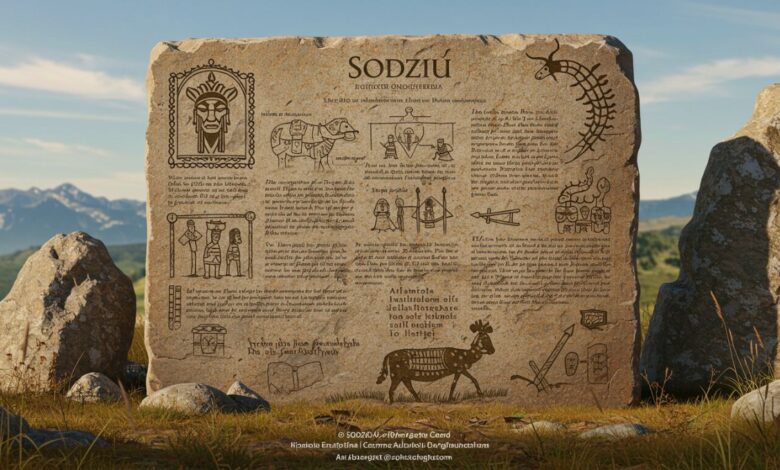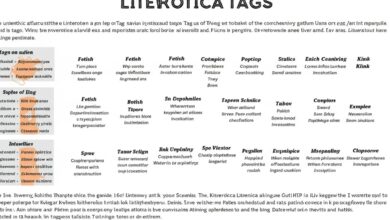Sodziu: A Detailed Exploration of Its Origins and Cultural Significance
Exploring the heritage, traditions, and modern relevance of sodziu as a symbol of Lithuanian village life.

Sodziu is a term that often sparks curiosity among people unfamiliar with its meaning and origins. Rooted in linguistic and cultural traditions, sodziu is closely associated with rural life, village heritage, and the preservation of local identity. While the word itself may appear simple, its significance extends far beyond its literal translation, offering insights into community values, history, and the collective memory of people who used it across generations.
In this article, we will explore sodziu from multiple perspectives, including its etymology, cultural role, historical importance, and its relevance in modern society.
Etymology and Linguistic Background of Sodziu
The word sodziu comes from the Lithuanian language, where it generally translates to “village.” The term carries connotations not only of a physical settlement but also of social cohesion and shared cultural values. For many Lithuanian speakers, sodziu evokes nostalgia, linking them to their ancestral roots and traditional ways of life.
Interestingly, words similar to sodziu exist in other Indo-European languages, often connected to rural communities and collective living. This suggests that the concept of a sodziu is not merely linguistic but also a reflection of human society’s universal reliance on close-knit communities for survival and cultural development.
The Historical Roots of Sodziu
To understand the meaning of sodziu, it is necessary to explore the history of Lithuanian rural settlements. Villages in Lithuania were typically formed around agricultural practices, with residents working together to cultivate crops, raise livestock, and manage land. The sodziu became a symbol of cooperation, where each household contributed to the well-being of the whole community.
During the medieval period, sodziu communities were often organized under local lords or landowners. Despite the hierarchical structure, the sodziu preserved traditions, festivals, and rituals that defined the identity of the people. The resilience of these communities allowed them to survive political upheavals, wars, and social changes while keeping their cultural fabric intact.
The Role of Sodziu in Lithuanian Culture
Community and Cooperation
At its core, sodziu represents unity. Villagers lived in close proximity, relying on one another not only for economic activities but also for social and emotional support. Weddings, harvest celebrations, and seasonal festivals often became community-wide events where traditions were passed down.
Folklore and Storytelling
Sodziu life was also rich in folklore. Songs, fairy tales, and proverbs were created and shared within the community. These oral traditions helped preserve local knowledge, moral values, and a collective sense of belonging.
Religion and Spirituality
In many sodziu communities, religion played a central role. Churches or chapels often served as the focal point of the village, where people gathered for worship, celebrations, and community decisions. Religious traditions were interwoven with agrarian customs, creating a unique cultural identity.
Architecture and Structure of Sodziu
Traditional sodziu settlements were typically small, with wooden houses arranged around a central area or along a main road. These homes were simple yet functional, built with locally available materials like wood and stone. The architecture reflected the lifestyle of the villagers, emphasizing practicality and harmony with nature.
Farms and barns surrounded the houses, highlighting the agricultural foundation of the sodziu. Decorative elements such as wooden carvings or painted motifs often adorned homes, showcasing the creativity and craftsmanship of the villagers.
Transformation of Sodziu Through Time
Industrialization and Urbanization
With the advent of industrialization, many rural communities, including sodziu villages, experienced significant change. Younger generations moved to cities in search of better opportunities, leading to population decline in traditional settlements.
Political Changes
Throughout Lithuania’s history, including periods under foreign rule, sodziu communities were deeply affected. Land reforms, collectivization, and forced relocations disrupted the traditional way of life, altering the cultural and social structure of villages.
Modern Relevance
Despite these transformations, so-dziu has not lost its relevance. Many Lithuanians still identify strongly with their rural heritage, and some communities are experiencing a revival as people seek to reconnect with traditional lifestyles, nature, and cultural roots.
Sodziu as a Symbol of Identity
So-dziu represents more than just a village—it is a symbol of resilience and cultural continuity. For many Lithuanians, so-dziu is a reminder of their ancestors’ struggles and achievements. It embodies the values of hard work, cooperation, and respect for traditions.
Even for those who no longer live in villages, so-dziu remains an important part of national identity. Festivals, cultural events, and heritage projects often focus on preserving the memory of sodziu life, ensuring that it continues to inspire future generations.
Sodziu in Literature and Arts
Writers, poets, and artists have long been inspired by so-dziu. In Lithuanian literature, villages often serve as the backdrop for stories of love, struggle, and resilience. Folk songs and poems describe life in so-dziu with affection, often highlighting the beauty of the countryside and the strength of community ties.
Artists have also captured sodziu landscapes in paintings, showcasing the harmony between humans and nature. These artistic depictions help preserve the image of so-dziu as both a real and symbolic space.
Preserving Sodziu Heritage Today
Efforts to preserve sodziu heritage are ongoing. Museums, cultural organizations, and local communities work to document and restore traditional architecture, crafts, and practices. Some sodziu settlements have been turned into open-air museums where visitors can experience the lifestyle of past generations.
Additionally, eco-tourism and rural tourism are bringing renewed attention to so-dziu. Travelers seeking authentic experiences are drawn to traditional villages, where they can engage with local culture, taste homemade food, and participate in folk traditions.
Sodziu in the Global Context
While so-dziu is specifically rooted in Lithuanian culture, its concept resonates globally. Every culture has its version of a traditional village, representing the foundation of social life and human cooperation. By studying sod-ziu, we gain insight not only into Lithuanian identity but also into the universal importance of rural communities.
Comparisons with other cultures show both similarities and differences. For example, so-dziu shares parallels with Slavic villages, Scandinavian rural settlements, and even Asian agrarian communities. Each reflects a deep bond between people and their land.
The Future of Sodziu
Looking ahead, the future of so-dziu depends on balancing modernization with tradition. While urbanization continues to attract younger generations, there is also a growing movement toward sustainable living, rural tourism, and cultural preservation.
By integrating modern technology with traditional practices, so-dziu communities can find new ways to thrive without losing their heritage. Initiatives in renewable energy, organic farming, and digital connectivity offer opportunities to revitalize rural life while keeping the cultural essence intact.
Conclusion
Sodziu is far more than a simple word—it is a window into Lithuanian culture, history, and values. It tells the story of communities built on cooperation, resilience, and deep connections to land and tradition. Though many sodziu villages have changed with time, their legacy endures in literature, art, festivals, and the collective memory of the people.
By preserving and honoring so-dziu, Lithuania not only safeguards its cultural identity but also contributes to the global appreciation of rural heritage. In an era of rapid change, the so-dziu reminds us of the importance of community, tradition, and harmony with nature.




